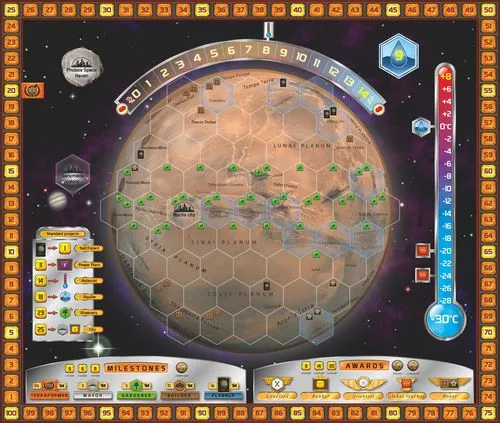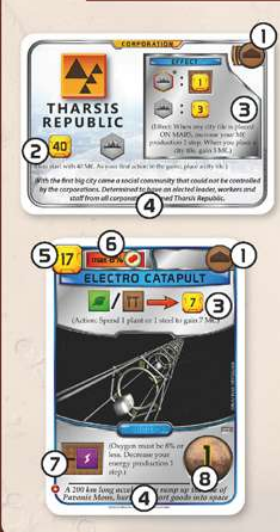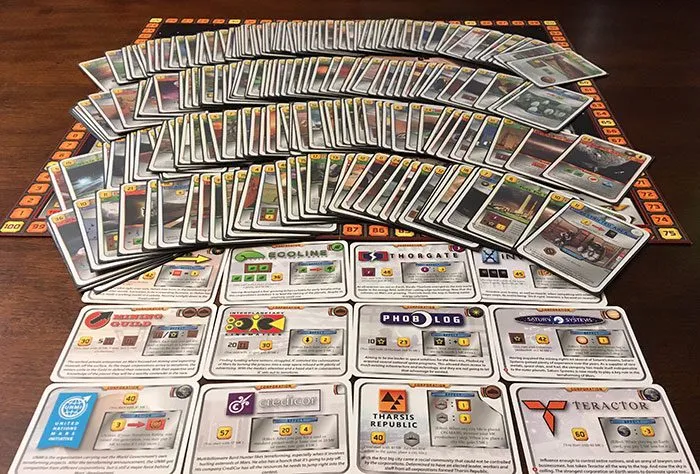Played by Asher, Hunter Kuhlemeier, Tyler Ziemba, Ron Gneezy and Yicheng
Terraforming Mars is a game about planting trees, importing oceans offworld and laughing maniacally at your friends while taking away their plants. An engine-building game at its core, Terraforming Mars tasks players to manage their income, resource pool and board area control.

Players compete to place cities, forests and oceans on the board while trying to accumulate victory points by amping up their resource production. Starting with physical props, the game consists of a map board, some hexagonal tiles, a sizable deck of cards, player boards, some fancy shiny resource cubes and player markers of various colors. The game adheres to the principle of form indicates function. You track both the resource pool and production with simple cubes, golden cubes equal to 10, silver cubes 5 and bronze cubes 1. Different parts of your player board are used to track resource production and stockpiles. All player progress can be conveniently tracked on the board. Producing 6 credits per turn? Place your marker on number 6 in the credits section. 20 heat stored in your bank? That equals 2 shiny golden cubes. The entire system feels initiative and rewarding when you juggle around physical, 3-dimensional tokens while maintaining a base level of consistency.

The rule book’s structure is fairly standard. You have the game overview that talks about game board elements, global parameters, functions of different game pieces, and how to read them. The next section, setup, is even shorter. Players only need to pick their corporation and draw their initial project cards and they are good to go. The shorter setup time encourages the “learn and play” approach to board games and makes Terraforming Mars significantly more approachable at a glance. The cards are designed similarly, with standardized symbols that make it easy to understand the cost, requirements to play, and category of each one. All cards also contain mini-instructions on what their exact special effects are and specific conditions to trigger them, which is a huge quality-of-life improvement over other games that favor using pure symbols and cramming all the explanations into the rule book.

The game ends when all three parameters: oxygen, ocean, and temperature have reached the final slot on their respective tracks (placing down all ocean tiles in the ocean’s case). Players obtain victory points by contributing to the terraforming processes like raising the temperature, accumulating special resources on certain special project cards, or earning a flat bonus from normal project cards. Building cities, planting greenery near the city, and funding special awards and milestones also award victory points. The awards/milestones mechanic is particularly interesting. Players can use their resources to fund a milestone or award that gives the first two players in a given category 5 and 2 victory points respectively, except anyone can claim these points and only two awards/milestones can be funded per game. There is an extra layer of engagement and planning on the grand strategic layer in addition to the normal planet-scale layer that is unique to Terraforming Mars as an engine builder.
